The one characteristic that separates soft PLA filament from others in the competition is that they are flexible. And because of their flexibility, they can be used to create rubber-like prints.
Their durability is renowned in the entire 3D printing community. Most of them are made from a mixture of a polymer of hard plastic and rubber, technically called thermoplastic elastomers.
The flexibility of the resulting material depends on the ratio of these two compounds. This makes it possible to print objects that are completely malleable but snap back like a rubber band.
Parts and functional prototypes like car tires that flex when pressured but otherwise maintain a firm shape are possible to make using these filaments.
So, let’s take some time out to know about Soft PLA filament types. But before that, let’s get an overview of soft PLA, its printing properties, pros and cons, famous brands, and a lot more.
Ensuring that when you are out in the market purchasing soft PLA filament for your 3D printer, you end up with the best! Because honestly; there are a lot of options out there.
What is Soft PLA?
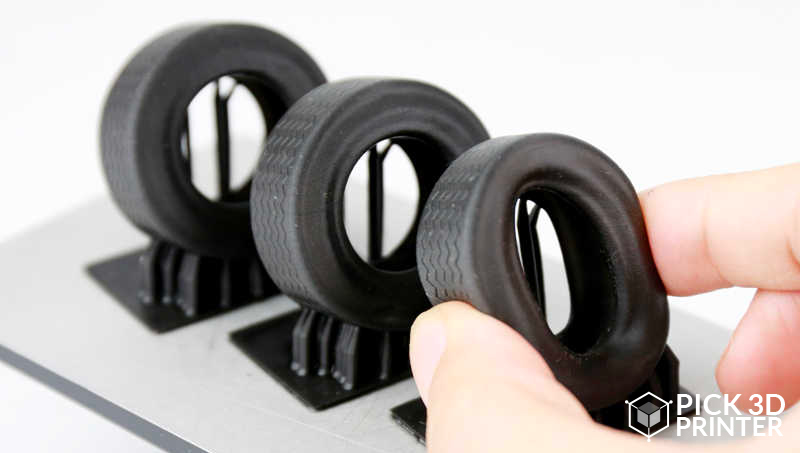
Soft PLA is a typical type of PLA 3D printing filaments made with natural materials, such as cornstarch, tapioca roots, or sugarcane. Pellets of these natural raw materials are melted down into a liquid.
The resulting mixture is shaped, dried, and hardened. The result of which is a long, thin filament and wound onto a spool for 3D printing.
Soft PLA filament spool is treated with additional chemicals for taking away much of the natural brittleness of regular PLA.
The addition of those chemicals allows PLA to gain characteristics of rubber. Only then it’s able to withstand manipulations in its shape.
So, when pressure is applied and released it can contract and spring back to its original shape.
Additionally, Soft PLA retains the ability of rubber to absorb an equivalent number of vibrations and impacts.
It’s extremely useful for making objects like tires that need to keep their shape to work and at the same time, are constantly exposed to pressures that have the capacity to break or crack a material.
Soft PLA is a generic term applicable to PLA blends made more flexible in terms of their performances. People also refer to it as tough rubber.
Compared to all the other flexible materials present in the market, soft PLA is known for its strength and durability.
Printing with the material is similar to printing with standard PLA, however, there are some exceptions.
What Are The Standard Features of all Soft PLA Filaments?
- They are biodegradable hence can be used in environmentally friendly applications.
- They have shore hardness ranging between 90 to 92A.
- High strength and commendable durability make them eligible for making a range of different parts used in automobile industries.
General 3D Printing Requirements
For printing with Soft PLA filaments, it is advisable to keep the extruder temperature range around 220 to 235 degrees Celsius and the print bed temperature around 100 degrees Celsius.
The print speed of your printer should be around 10 millimeters per second for printing parts with complex geometries.
Whereas while printing parts with simple geometries you can allow the print speed to be around 30 millimeters per second!
Although for the extruder design direct drive, as well as Bowden is compatible, experts recommend direct drive over Bowden.
Who Makes the Best Soft PLA Filament?
When it comes to shopping soft PLA filaments, there are a lot of options and hence a lot of confusion too. But we did the drilling and come up with five brands that you can easily rely upon.
Let’s check out their specifications and printing requirements.
Flexible PLA by Rigid Ink
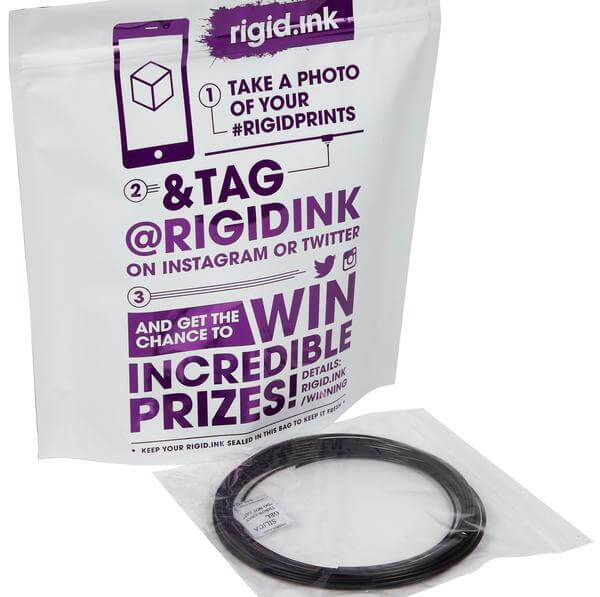
Rigid Ink’s Flexi PLA is versatile enough to let you print with it thick-walled or higher infills for a stiffer, extremely durable part.
On the other hand, it also allows you to print the walls thinner, with a much lower infill for creating a very flexible, soft structure.
This soft PLA filament won’t stretch much though, and this is what makes it ideal for printing pulley belts, or tank tracks, etc.
The brand is considered to be an all-rounder for flexible applications. Moreover, also a great starting material to get to grips with flexible prints before deciding to move onto other materials, such as TPU! Its Shore hardness is 55D.
Printer Settings
- The printing temperature of your printer should be around 240 degrees Celsius.
- A bed Temperature range of 30-60 degrees Celsius favors this brand for producing amazing quality prints.
- For excellent bed adhesion, you are recommended to use glue-stick, 3DLAC, or Vinyl hairspray. Or simply increase the air gap between the nozzle for the first layer and the bed. But the filament manufacturer insists you to avoid FR4, PEI, and BuildTak.
- A print speed of 15mm/s or if you want to print with higher speeds, use slightly hotter printing temperature i.e., 245 degrees Celsius. So, it’s simple, use slower speeds to print with slightly lower printing temperature ranges around 230-235 degrees Celsius or vice versa.
- Run the cooling fans at 100% efficiency after layer 1.
Soft PLA-Flexible by Filament 2 Print
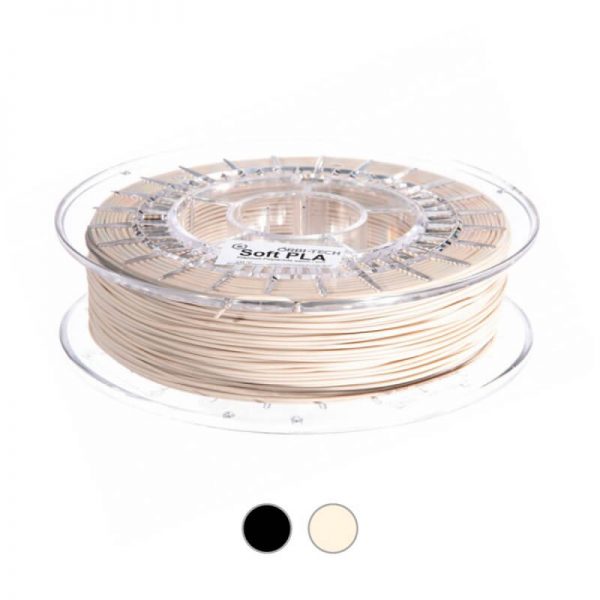
Here’s a flexible filament with durable rubber properties useful for making parts that need to be flexible i.e., do not break when bent and also stay durable.
Soft-Flexible PLA is famous for its flexibility; texture which reminisces of rubber and has a Shore hardness of 92A.
This filament is made up of an impact-resistant material which makes it completely suitable for many industrial and domestic applications such as:
- Tire.
- Machine parts – mechanical elements that must withstand a force.
- Children’s toys and a lot more.
Printer Settings
- This soft PLA filament does not require a warm bed. Although if a warm heated bed is available, it is recommended to print at 60 degrees Celsius temperature.
- Generally, this filament produces excellent quality prints, when printed at low-temperature ranges i.e., between 190 and 220 degrees Celsius.
- It is made of materials with almost no deformation of the pieces with respect to the base i.e., warping.
- Printing speed while printing with the filament should be lower in the range of 10mm/s to 30mm/s.
- It is always advisable to use either of these over the print bed of your 3D printer for excellent layer adhesion: Magigoo, BuildTak, Kapton Tape, DimaFix, or 3DLac.
- Also recommended to set the “raft” to create a first thick layer, and ensure that supports will not suffer that contraction and on which is printed the piece.
Soft PLA by MatterHackers
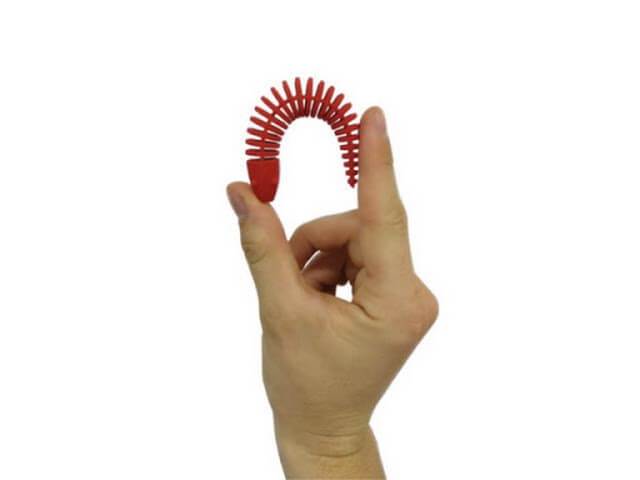 Credit: matterhackers
Credit: matterhackers
Soft PLA is a very flexible 3D printing material feeling and acting much like rubber. It is a great choice for creating parts that can bend or must flex to fit their environment such as; stoppers, belts, springs, phone cases, tires, machine parts, kids’ toys, and more.
This is an extremely flexible PLA that allows you to create prints having the properties of durable rubber. Meaning that it is remarkably resilient and elastic.
The point to be noted is that regular PLA is very stiff and hence does not bend well. On the contrary, Soft PLA is extremely flexible.
This makes it impact-resistant and suitable for a host of other industrial and household applications mentioned above.
MatterHackers claims that their filament is a flexible and eco-friendly product. It is a bioplastic, so in layman’s terms, it’s made of renewable resources like corn and tapioca.
Also, it’s biodegradable and therefore much more environmentally friendly than ABS which is made of petrochemicals.
MatterHackers offer 3 filaments, all of which are excellent choices with different levels of hardness and flexibility.
Ninjaflex is the softest with a shore hardness of 85A, TPE being slightly firmer with a shore hardness of 90A, and Soft PLA being the firmest of the three with a shore hardness of 92A!
Printer settings
- Make sure that you are printing soft PLA at a significantly hotter temperature range than regular PLA i.e. around 220°C to 235°C.
- In case you have any trouble printing with Soft PLA you are advised to try lowering your print speed and adjust the print temperature for finding the ideal mix for your machine.
- If your 3D printer has a Bowden tube, Soft PLA is the best choice for you.
ECO soft PLA by Flashforge
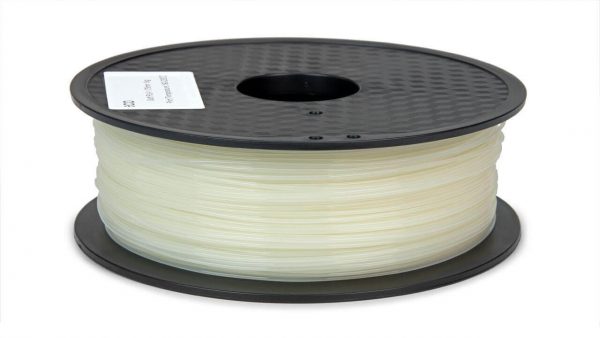
The filament manufacturer claims how ECO filaments are made of high-quality granules and the manufacturing process is well tested under controlled conditions making the ECO filaments persistent in diameter.
Printer Settings
- It is recommended to keep the build platform of your 3D printer between the temperature range of 20 to 40 degrees Celsius.
- Also, having a cooling fan in your 3D printer will expedite the overall printing process. So, it’s like a must-have thing.
- Keep your printer’s extrusion temperature ranging anywhere from 220 to 225 degrees Celsius.
- The filament manufacturer also recommends you to cover the build platform, either with blue tape or build surface, you can even use a glue stick for best adhesion.
PLA Soft filament by Mega 3D
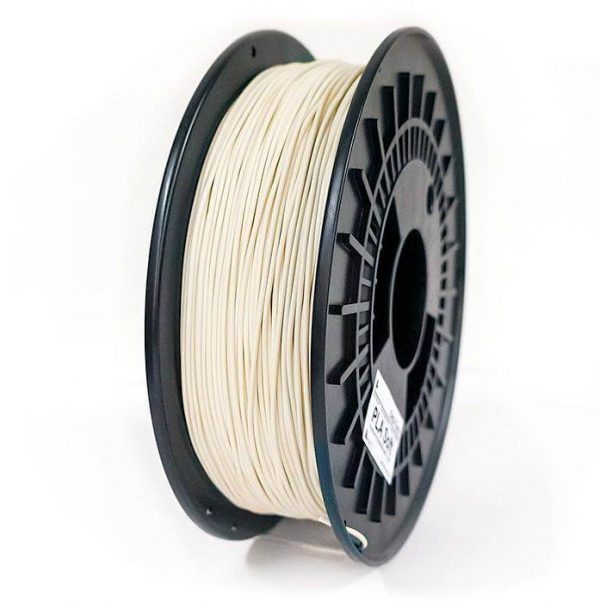
This Soft PLA has flexibility like that of hard rubber or TPE. Its surface texture feels soft. And there is practically no shrinkage and almost no warp effect after 3D printing parts from this filament. It has a shore hardness of 92A.
Printer Settings
- Consider printing the filament between temperatures 210 to 220 degrees Celsius.
After having gone through the brand recommendations, before concluding the article let’s go through the pros and cons of printing with soft PLA filament types.
What Are The Pros & Cons Of Soft PLA?
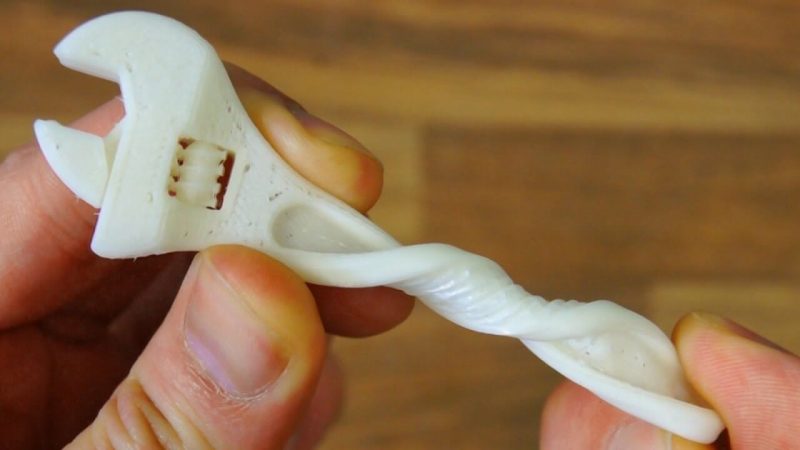
Like every other 3D printer filament, soft PLA has its own advantages and disadvantages that you have to keep in mind.
- Because the filament is made of a unique blend of materials, it contains eccentric firmness that makes soft PLA an excellent ergonomic material. You can use it to make pen grips, shoe soles inserts, etc.
- Although making Soft PLA filament does use more chemicals than regular PLA filaments, which makes soft PLA flexible, its carbon footprint remains lower than any other flexible filament you can find. Additionally, soft PLA remains biodegradable.
- Of course, the main attraction for soft PLA is its flexibility. This is a boon to PLA filament since PLA is responsible for creating very brittle final products.
- Because of its unique characteristics i.e., flexibility, strength, and durability, soft PLA makes good dampening components which makes the filament a great cover for machine parts absorbing a lot of movement from those around them.
- Soft PLA is prone to acting out during the actual 3D printing process. Although this is because of the qualities that make it flexible, it takes away much of the tension that filaments require to go through the extruder while retaining their string-like shape and this creates difficulty while 3D printing.
- For 3D printing with various types of soft PLA filaments, you’ll need to add on tools such as a direct drive extruder. This tool makes filament’s journey from its feeding entrance to the print bed as short as possible, which assists you to keep soft PLA from catching on bends on its way out.
The Conclusion
Are you still confused about the question: “is soft PLA the same as TPU?” No! It’s not. It is different than TPU in a lot of ways. Both the filaments differ in stiffness, application, abrasion resistance, and most importantly flexibility.
So overall, it is clear that printing with soft PLA filament has its own benefits like getting rubber-like parts. However, you need to take some stringent care when printing with the same. Also, in recent times this filament and its variants have gained a lot of popularity because of their eccentricities.







